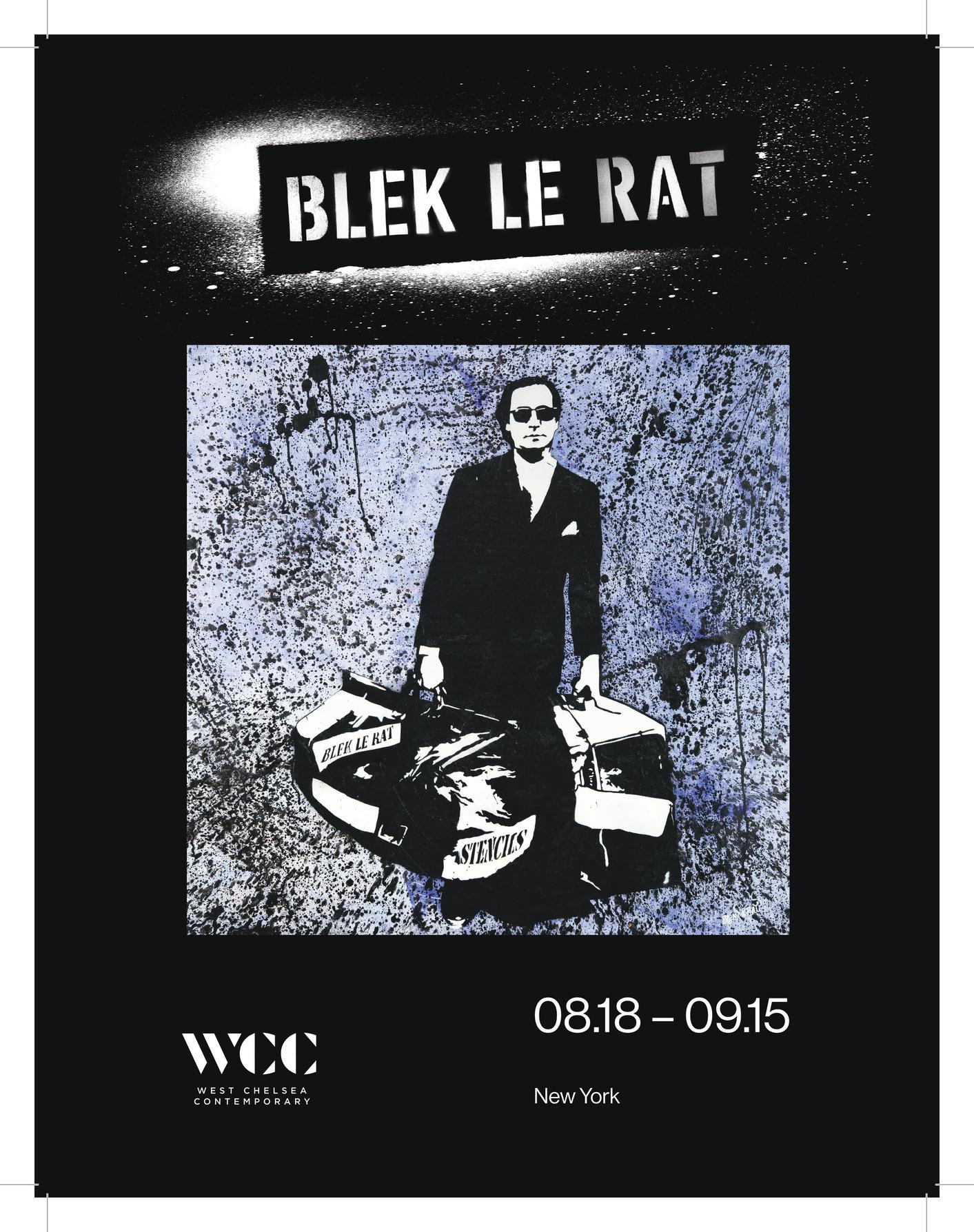
West Chelsea Contemporary is a world-class gallery offering museum-quality art in Austin, Texas, and New York City, focusing on 20th century and contemporary art predominantly in American, Asian, and European post-war movements. West Chelsea Contemporary opened in October of 2020 under the direction of Lisa Russell, who has operated this gallery since founding Russell Collection in 2002. With this gallery rebrand, her vision is for West Chelsea Contemporary to satisfy the evolving demographic and style of Austin’s culture by showcasing everything from mid-career and emerging artists to legends like KAWS, Yayoi Kusama, Keith Haring, Shepard Fairey, Andy Warhol, Blek Le Rat, Mr. Brainwash, Fiona Rae, Roy Lichtenstein, Takashi Murakami and more West Chelsea Contemporary clients are assisted by an expert staff dedicated to providing the highest level of service
NEW
YORK CITY - CHELSEA
231 10th Ave New York, NY 10011
646.590.0352

Monday - Wednesday 10am - 6pm
Thursday - Friday 10am - 8pm
Saturday 10am - 6pm; Sunday 12 - 6pm
AUSTIN - DOWNTOWN
1009 West 6th Street #120 Austin, TX 78703
512.478.4440


Monday - Wednesday 10am - 6pm
Thursday - Friday 10am - 8pm
Saturday 10am - 6pm; Sunday 12 - 6pm
WCC.ART @WCC.ART SALES@WCC.ART
WCC.ART WCCGIFTSHOP.ART
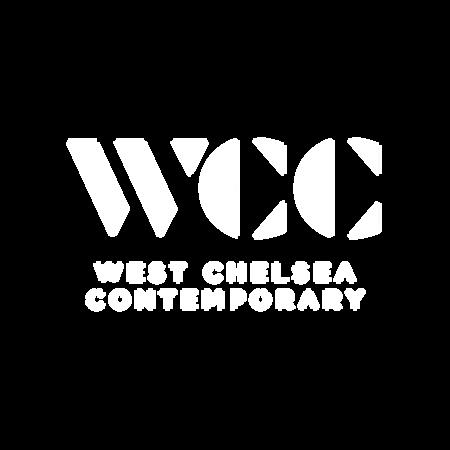




FOREWORD BIOGRAPHY......................................................................................................................................... CAREER HIGHLIGHTS..................................................................................................................... MANIFESTO OF STENCILISM..................................................................................................... THE ORIGINAL STREET ARTIST ART AS INFLUENCE: MUSIC & DANCE................................................................................. THE MAN WHO WALKS THROUGH WALLS..................................................................... AVAILABLE WORKS 1 - 2 4 6 8 - 12 14 16 43 17 - 74 INDEX
FOREWORD
Blek Le Rat’s stencils distill the essence of the human struggle into poetically concise images. Blek shows clarity in his work. He makes every stylized mark count, yielding art that is at once personal and universal, economical in gesture, and bountiful in statement
Shepard Fairey
West Chelsea Contemporary is proud to present the New York gallery’s first solo exhibition, Blek Le Rat. A pioneer of international street art and dubbed the “Father of stencil graffiti,” Blek Le Rat has a prolific practice that spans over four decades and four continents. This exhibition features Blek's newest body of work, which presents two dozen works on canvas employing some of the artist's most well-known imagery
Blek was first introduced to graffiti in 1971 during a trip to New York City and was inspired to bring the style back to Paris. A decade later, Blek drew on his degree in printmaking and his appreciation for urban art, integrating the ethos of graffiti with the practicality and refinement of stencil-based design. Blek began stenciling small black rats as if they were running along the walls of the city. The rat, an anagram of the word ART, was a symbol to Blek of the freedom and dissemination of art throughout the city analogous to the rat as a carrier in the spread of the plague.
While walking through the streets of Paris one night in 1983 Blek was startled when he encountered a “Shadowman” by Richard Hambleton, a larger-than-life black silhouette painted along the Les Halles palisades one of many the New York-based artist painted during his travels across Europe in the 1980s. Blek recalls, “When I saw these things by Hambleton, these figures of an extreme violence and extreme beauty that seemed so enormous at the time, it took my breath away.” It was this encounter that inspired the artist to develop his small stencils into life-size figures. Blek’s first stencil of this size was based on a photograph of an old Irishman screaming at English soldiers, a symbol of the common man.
-
(Blek Le Rat, Art Publishing Limited, 2011)
1
Throughout the following decades, Blek represented a range of characters Andy Warhol, Michelangelo’s David, Jesus Christ, Lady Diana, anonymous civilians, and even the artist himself complete with the body of Buster Keaton carrying suitcases filled with stencils.

Motivated by social consciousness and a desire to bring art to the people, Blek Le Rat’s monochromatic stencils are infused with irreverent riffs on pop culture, poignant socio-political commentary, and references to classical art history. In his studio work, Blek uses the same large-format stencils that he applies on the street, carefully building up the canvas into a rough surface as it would be in situ This fluid relationship between street art and studio practice results in a cohesive body of work that is imbued with imaginative vision drawn from the lived moment
It is only in recent years that graffiti and street art have become regarded as a valid form of fine art both in the eyes of the established art world and the public alike As the discourse has evolved and street art has been lauded as a pivotal movement in the history of art, Blek Le Rat has been recognized as inextricably tied to this legacy. Pioneering the movement of stencil graffiti, Blek has influenced generations of street artists around the world, including the infamous Banksy who has claimed “Every time I think I’ve painted something slightly original, I find out that Blek Le Rat has done it too, only Blek did it twenty years earlier.”
Over the course of his forty-year career, Blek Le Rat’s thoughtful and provocative imagery has appeared in city streets across the world. His canvases offer a glimpse into an artistic practice that is diverse in subject, unique in vision, and masterful in technique West Chelsea Contemporary is honored to have the artist who is traveling to the United States for the first time in nearly five years join us in both the New York and Austin galleries to celebrate his most recent body of work.
2

French, b. 1951 BLEK LE RAT
Blek Le Rat, born Xavier Prou in Boulogne-Billancourt, Paris, was one of the very first graffiti artists in Paris and has been described as the “Father of Stencil Graffiti” Blek was first introduced to graffiti during a trip to New York City in 1971 where he was inspired to bring the style back to Paris, adapting the stencil as a more fitting technique for French architecture. He is best known for stenciling a giant graphic image of a rat all over Paris in the early 1980s, which to him symbolized both freedom and the dissemination of art through the city as if it were the plague Blek, who has influenced generations of urban artists around the world, boasts a subtle social commitment and considers his images as a gift he gives to the city. His works often represent solitary individuals that can be encountered in the urban space–women, children, the elderly, and a diverse range of contemporary characters. In a desire to bring the people of the city closer to art, he quotes the great classics such as Caravaggio, Michelangelo, and Leonardo da Vinci. “I would like to bring the characters out of museums to return them to the people of the city ” His street art has appeared in cities across the world, and he has exhibited in New York, London, Los Angeles, Melbourne, and beyond.
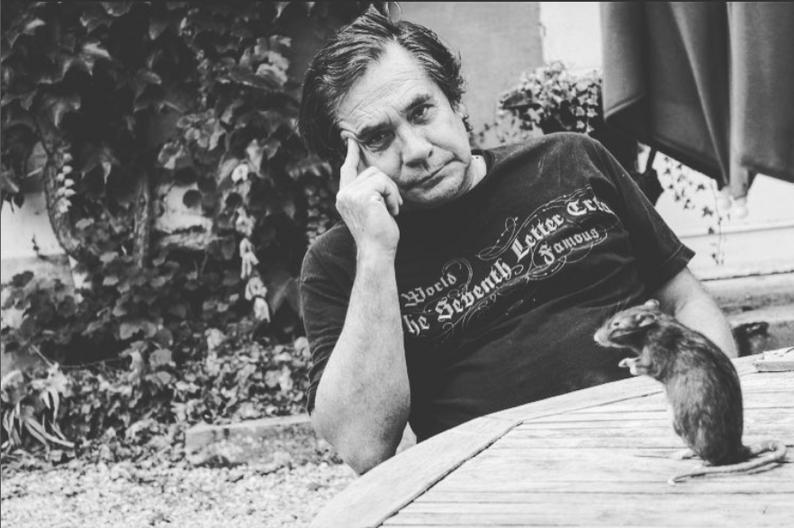
4
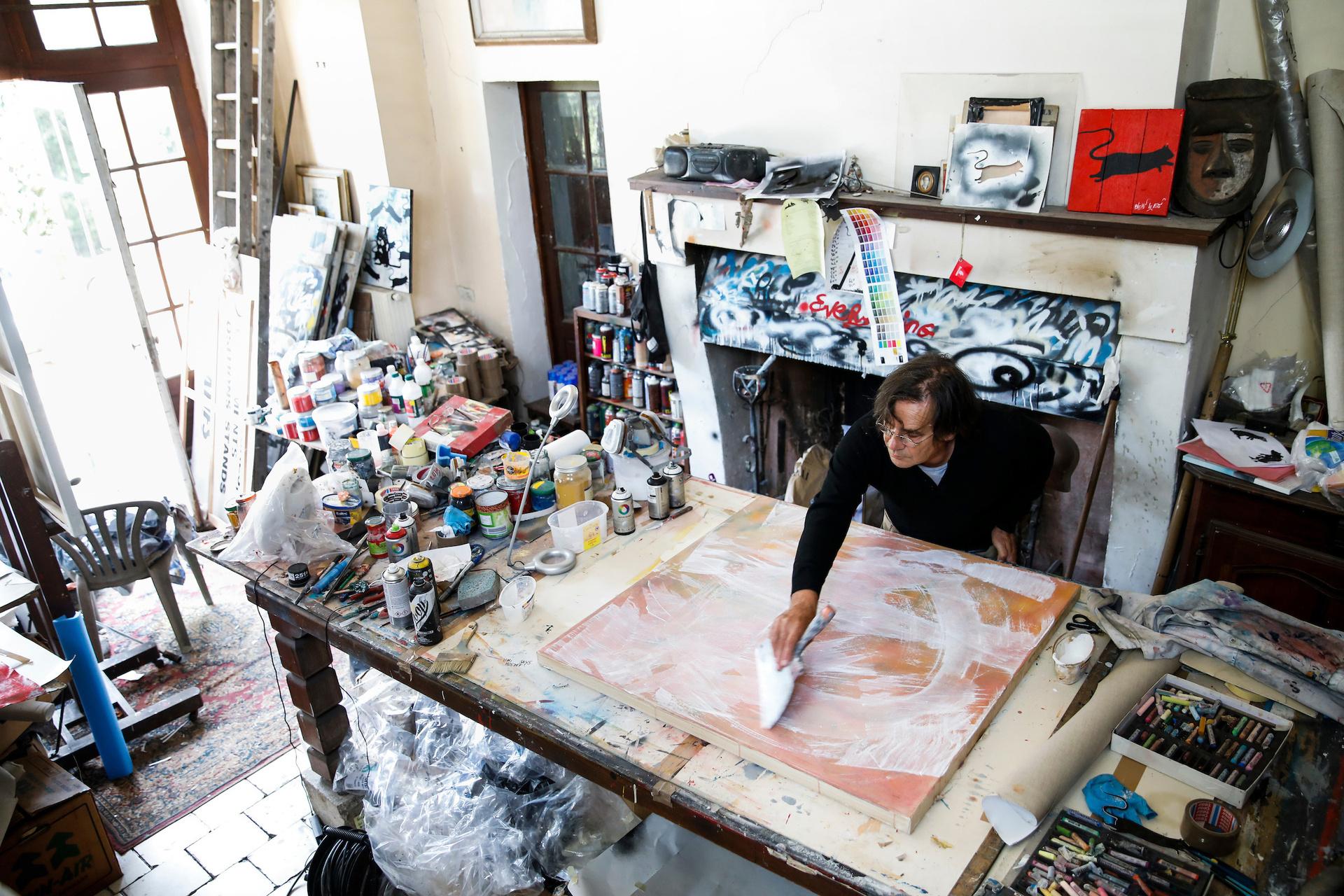
Travels to New York where he is influenced by burgeoning graffiti scene
Begins spray painting rats on the streets of Paris
Graduates École des Beaux-Arts where he studied Fine Art & Architecture
Sees Richard Hambleton's "Shadowman" in Paris inspiring him to create life-sized stencil designs
First Solo Exhibition | Peinture Sauvage, Galerie Saint Claude, Paris
Participates in the first gathering of the graffiti and urban art movement in Bondy, France
1991 Blek Le Rat from Paris to Tokyo, Takarshi Gallery, Tokyo
2002 Blek Was Here, Urban Art Gallery, Berlin
Blek Le Rat in London, Leonard Street Gallery, London
Participates in Cans Festival, Waterloo, London
Art is Not Peace But War, Subliminal Projects Gallery, LA
La Ciel Est Bleu, La Vie Est Belle, Metro Gallery, Melbourne, Australia
Escaping Paris, Curated by DK Johnston, The Quin Hotel, New York
Reaches auction record high of $93,610

Propaganda, Wunderkammern, Milan, Italy
The Man Who Walks Through the Walls, Galerie Kronsbein, Munich, Germany
Featured in Saving Bansky documentary Ratical, Vertical Gallery, Chicago IL
1971 1981 1982 1983 2006 1985 2008 2009 2014 2016 2017
6

MANIFESTO OF STENCILISM
I saw wildstyle graffiti for the first time during a trip to New York in 1971 There was an incredible profusion, in the subway, on the walls surrounding basketball courts, graffiti drawn in marker, nestling signatures surmounted by a crown, spray-painted lettering, filled with swirls and colors, everywhere I looked I was so intrigued by these illuminations I remember asking the inevitable question: "What does all this mean? Why are these people doing this?”
Unfortunately no one could give me a satisfactory answer, except that it was the work of thoughtless and irresponsible people. I found that people engaging in graffiti were generally known as a “dirty bunch,” and called such by John Vliet Lindsay, mayor of NYC from 1966 to 1973 At the same time in Paris, this means of expression was still in a latent state Of course, there were the political and social demands scribbled on the walls of the city in 1968, and of course, we had addressed the subject through posters of protest created in the social workshops at the École des Beaux-Arts, but there was yet to be a movement of artists investigating the urban landscape and acting out artistically within it Yet the street art movement had already existed in the United States since the mid-60s when dozens of artists, condemned to urban anonymity, sounded the alarm, writing their tags on walls, in spray paint or marker.
The graffiti I saw in New York remained firmly planted in my memory though acting out my own graffiti took ten years to hatch. Studying fine arts and architecture during the 70s at the École des Beaux-Arts in Paris familiarized me with the techniques that would come in handy later, in my work on the street I became well versed in the techniques of etching, lithography, and screen printing, and all of these methods, along with the study of architecture at the Architectural Teaching Unit #6, made me aware of the intricacies of planned urban space It was also in the early 70s that I was largely influenced by David Hockney, who had a major exhibition near the École des BeauxArts in Paris. I can say that his work is the most impressive thing I had ever seen in my life. The following year Hockney made a film titled The Bigger Splash, in which he uses oil to paint the image of one of his friends on the wall of an apartment; the image has never left my mind. I thought this film was so important to the history of art that I watched it over and over, as many as ten or fifteen times.
8
In 1980 my friend Gerard and I worked at an adventure playground in the town of Les Ulis, designed for pre-teens during the school holidays I was working as a volunteer on this adventure playground It was a place inhabited by young children who came to meet other children without the world of adult authority intruding upon their games. The playground was located directly behind a supermarket and people the children frequently came and went between the two Among the discarded trinkets from the store, one could regularly found find paint cans that were removed illegally from the store and used to paint and repaint the cabin in which we kept our equipment.
Big, dripping Frescos following no particular style appeared throughout the year and were routinely painted over. Gerard and I were moved by each and every creation and we decided to get some spray paint of our own out of the desire for modernity. We had caught the bug The capital was ours, we needed only to act The first time we did graffiti, in October 1981, Gerard and I tried to reproduce the American-styled graffiti on an abandoned wall in the fourteenth arrondissement of Paris, on Thermopylae Street. It was a fiasco! None of the imagery turned out well. I then suggested we make stencils a very old technique that was an ancestor to screen-printing and later used by far-right Italian political factions in their propaganda. After remembering the stenciled image of the Duce helmet I’d seen in the early 60s, a remnant of WWII, during a trip I took with my parents to Padua, Italy We finally had the technique and the equipment, we had only to act
The streets of Paris afforded us ample space to work in, and the practice of graffiti was completely unknown at that point, so the roaming police rarely disturbed us unless they wanted to know what we were doing and whether our agenda was political We answered: “No it’s art,” and the game was won. Gerard and I used the name BLEK in reference to an Italian comic book that we read in our childhood called Blek le Rock. We chose to use a pseudonym because we decided we wanted to remain anonymous as a way to challenge the locals.
Who were the authors of these little rats, these bananas, the little running men, and all the little stencils that we made during the day and sprayed come night throughout the fourteenth and the eighteenth districts of Paris?
Over time, our nocturnal outings became more and more frequent On December 31st in 1981, we decided to stencil the temple consecrated to Modern Art: the Centre Georges Pompidou.
9
That night in the freezing winter cold, we painted lots of rats, tanks, and small figures on the Centre Pompidou, a place where people come from all over the world to worship art Museum guards came out to ask what we were doing there As when we had been questioned by the police, we answered “art,” to which the guards responded with a slight smile. In 1983 the duo that made up BLEK separated when Gérard developed other interests he wanted to pursue Upon finding myself without a partner, I decided to adopt Blek le Rat as my nom de plume. It is through the name that we are recognized, tracked, the image becomes a support to the name, the name that told me: You exist for thousands of people you do not know and you will never meet, but you exist in this closed world of urban anonymity
I felt empowered to paint and avoid the middlemen who would judge my work with their values I had found liberty within the anonymity of my work, a form of freedom I was alone in the city and the city was mine After a night spent painting, I would pass by my walls, again and again, sometimes standing for hours looking at my work and the people passing by. The smallest glance they gave my graffiti filled me with joy. My enthusiasm had me creating more and more ephemeral images, with the wear and tear of painting on the streets, individual stencils don’t last very long. Dried paint eventually forms a crust around the stencil’s edge and the cutout sections close up after being sprayed several times New stencils always have to be made; the more I worked, the better my technique became, and with improved technique, the easier it was to do better work faster.
In March of 1983 after mastering my technique, I came up with the idea of making a lifesize stencil I found a photo of an old man wearing a cap in the newspaper Libération Taken in Northern Ireland, the photo suited my needs perfectly. This character would stroll through the streets of dozens of cities in France, left as a hint of my passage. He became known as “Buster Keaton,” “Charlie Chaplin” and “the old man,” and eventually took on a dimension that I had not originally intended. His figure became famous in an unexpected way: The public was enamored with the image, and the photojournalists were in a frenzy to capture each painting that I put up
During that time, I would often stumble onto printed photographs of my figure in various newspapers beside articles that were unrelated to graffiti. Because this venture was so successful, many other life-size stencils followed, all of which resembled me in some way and with whom I felt an affinity
10
There was Tom Waits, a little boy in short pants, Andy Warhol, Marcel Dassault, The old Man with a Stick, a woman and child, a Russian soldier that I painted at every exit of the main périphérique around Paris, President Mitterrand, a faun, Joseph Beuys, a man simultaneously running and screaming, two dogs in mating, and a woman in garter belt stenciled on the entrance to Serge Gainsbourg’s house and other appropriate places.
They were my characters, and I think they all resembled me somehow. They introduced me to the world like a person would introduce himself to another and when I paint my characters, I always feel as though I am leaving a part of myself on the walls of the cities around the world that I’ve visited
During the summer of 1984 stencils other than my own began to appear on the walls of Paris The first I saw were signed by Marie Rouffet and Surface Active A dialogue had been established between us and their graffiti was complementary to mine; it was as though we shared a private joke between us, which did not displease me, and aroused in me a myriad of thoughts about this new language, of hieroglyphics that we had in common
While stencil graffiti flourished in Paris the surreptitious repression (that was the criminal justice system) began to stretch out its feelers The cops were becoming more aggressive and I experienced my first arrest in Les Halles It was my first time in police custody, my first police report, my first questioning by a detective. Fortunately for me, this detective was a fan of comic books and did not transmit the report to the prosecutor Nothing came of the arrest, but the fear of being caught became very real soon after and has never left me from the end of 84 From that moment on, I studied the habits of the cops, their comings and goings, which days they had off and the times they made their rounds. I learned to hide my equipment under cars, to have friends watch the streets where I was going to work, and finally, I got used to taking more precautions as my activities became illegal and the penalties increasingly severe. Despite this unbearable game of hide-and-seek, the desire to express myself, to paint, was so strong that the tension was transformed into an endless flood of creativity when the time came to work For there is no greater joy for me than to work on the streets in the depths of a winter night when my hands freeze and the heart burns in fear.
Throughout the years, I continued to be anxious about the possibility of incarceration It was in October 1991 when that fear became a reality I was ordered to appear before the Parisian court for the crime of damaging property belonging to others.
11
I was again fortunate enough to come across a judge who loved my work and said: “I can not condemn you for this, it’s too beautiful,” after looking at a photo of my stencil my lawyer had given him

Urban artists have simply the intention to speak via images; these images are intended words to the community: paroles of love, hate, paroles of life, and death It is a kind of therapy; therapy that showcases elegance, refinement, and attempts to fill the gaps of this horrible modern world, to cover urban areas with images of joy and catch the eyes of passers-by in the early morning as they begin their day But the authorities are implacable in their reaction to street art, declaring war on graffiti, and using the law to hold over the heads of these young artists a punishment that is not equal to their misdeeds. They threaten street artists with huge fines as if our cities have more to fear from unsanctioned artwork than drugs
The immense desire to paint and to express ourselves through our imagery has been so strong that urban artists around the world have made this movement the most important of the century, with its profusion of images and the number of people who participate. One has only to look at the scope and breadth of our work across the globe to see how far we’ve reached and the authenticity of our messages. There is no place

THE ORIGINAL STREET ARTIST
The art movements that were born in dislocated and alienated urban communities of America in the second half of the 20th century are an inspiration in a world where, for most people, life takes place in the streets Graffiti is so contagious and attractive to urban youth because its symbolic power lies in the inherent message: "I'm here, get used to it." It is an invaluable outlet for people who have no voice, no other way of standing out, expressing themselves, achieving something to be proud of, changing the world
Tagging your name and the urge to create something beautiful in the process was a radical impulse But from the beginning, it was apparent that graffiti was also a kind of public art with great potential for expression of all kinds---political, cultural, humor, irony, thoughts, and feelings. Many years later, the thriving street art movement appears to be fulfilling its promise to contribute to the public forum of ideas in a powerful and honest way
Blek le Rat is the original street artist. Thirty years ago, Blek saw in the exuberant early graffiti pieces the potential for expression beyond painting your name Here was the freedom to say whatever you wanted to say, to share with others something of your own experience and vision of the world. Street art is the vital, alternative voice of an independent underground, and a source of new ideas and ways of looking at life with more honest insight and conviction than is often the case in the media and institutions of the mainstream This radical freedom is very important because it allows the artist to escape, in public, from the kind of restraint inherent in our social, cultural, and economic order.
Blek's stencils are in some ways aggressive and in-your-face, as in his metaphor of the rat as graffiti spreading like a disease, but they are always deeply human and compassionate We can identify with this humanity, and we're moved by his subtle irony and humor Blek's anti-war messages and critiques of authority have been welcome antidotes to the virulent militarism of our governments and powerful economic interests, which have oppressed us for the last decade. The visual conversations and other ephemeral delights taking place on our walls have enlivened and enriched our daily journeys through the streets
Henry Chalfant (Blek Le Rat, Art Publishing Limited, 2011)
14
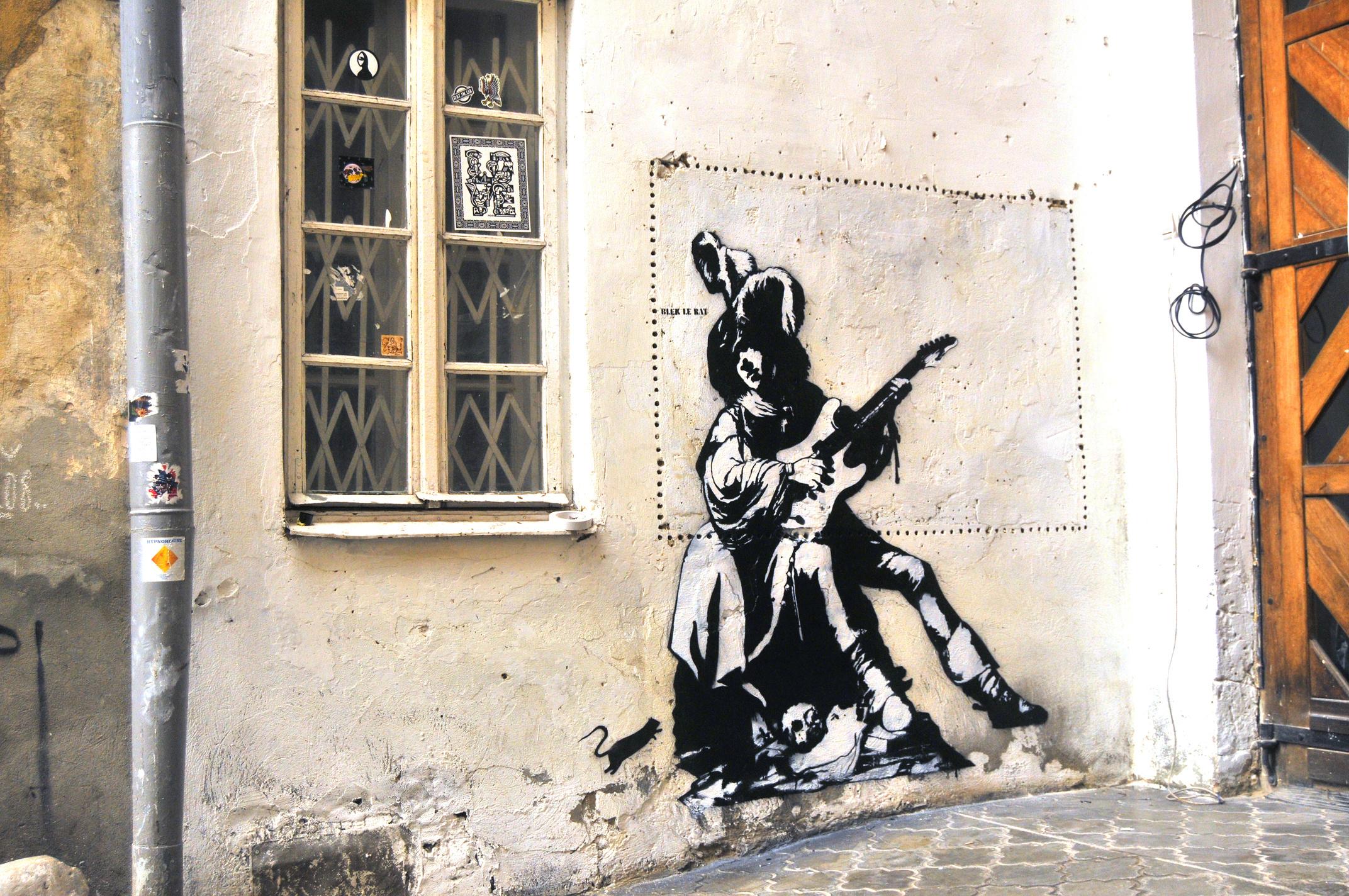
ART AS INFLUENCE: MUSIC & DANCE
Among Blek Le Rat’s diverse range of subjects are a host of works featuring musicians, dancers, and composers. It is this collection of work that the artist considers his highest form of art
With the aim of bringing “characters out of museums to return them to the people of the city,” Blek often takes inspiration from compositions of the old masters such as Caravaggio, Michelangelo, and Leonardo Da Vinci. The artist’s deep fascination with cultural production and engagement with other modes of artistic expression is evident in works of this nature. Blek often incorporates ironic juxtapositions, merging classical figures with symbols of modernity, as in his Renaissance musician who sits playing the electric guitar
During a trip to South America ten years ago, Blek encountered flamenco and tango dancers in the streets of Argentina. Inspired by their balletic movements and the freedom of their expression, Blek began incorporating dancing figures into his repertoire of characters The artist has explained, "Dance makes me forget the laws of gravity." As a master of stencil design, Blek's dancers beautifully translate the experience of fluid motion into a single moment. When viewed together the works appear as though they are gracefully gliding along the wall.
16
Blek Le Rat
5 Ballerina Colour, 2021
Acrylic and aerosol on linen
63 75 x 51 75 in
17

Blek Le Rat
Danseurs Red White, 2022
Acrylic and aerosol on linen
40 x 40 in
19

Blek Le Rat
8 Dancers, 2021
Acrylic and aerosol on linen
51 1 x 39 1 in
21

Blek Le Rat
4 Danseuse Colour, 2021
Acrylic and aerosol on linen
63 75 x 52 1 in
23
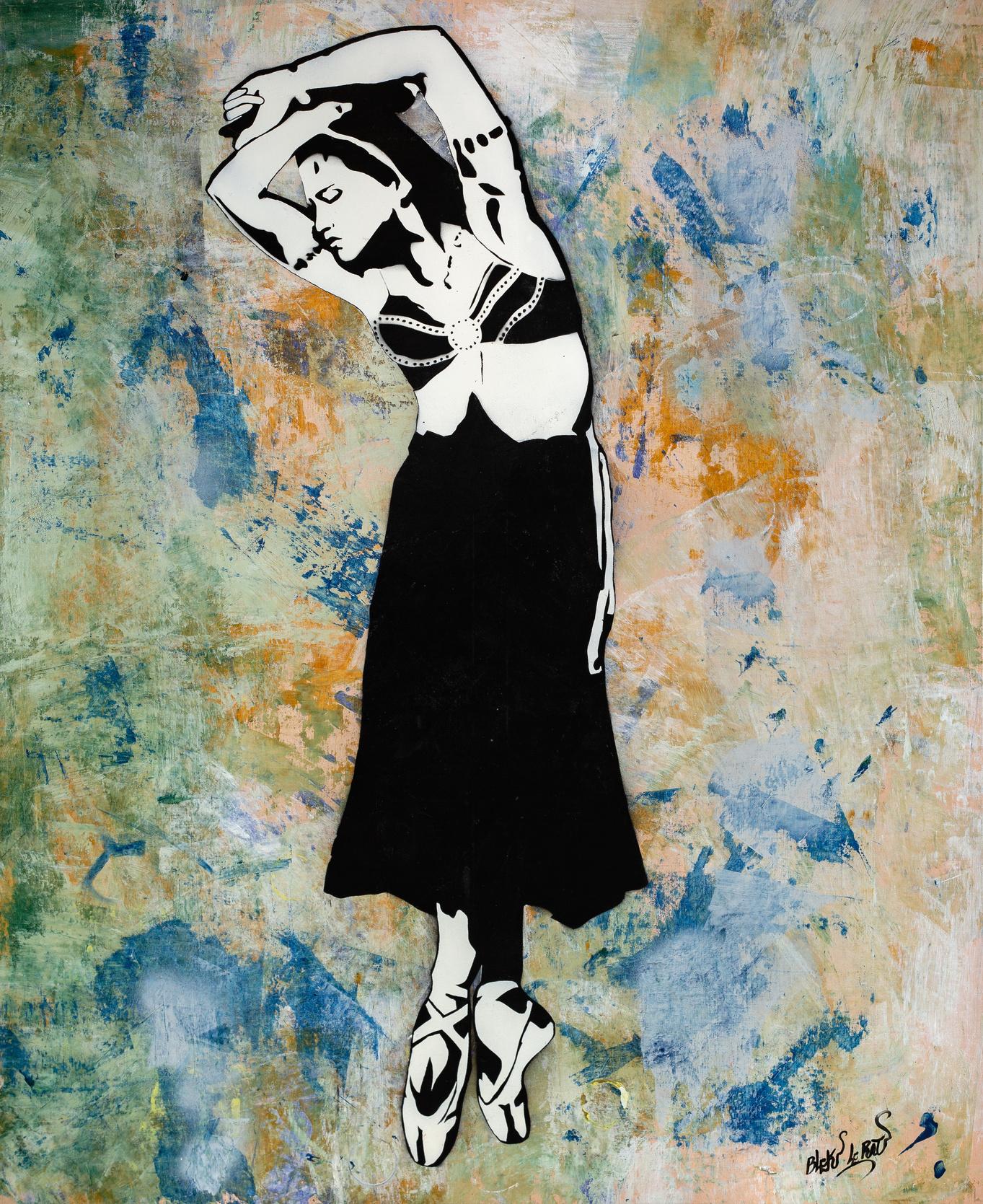
Blek Le Rat
Danseuse Pastell, 2022
Acrylic and aerosol on linen
66 x 51 50 in
25
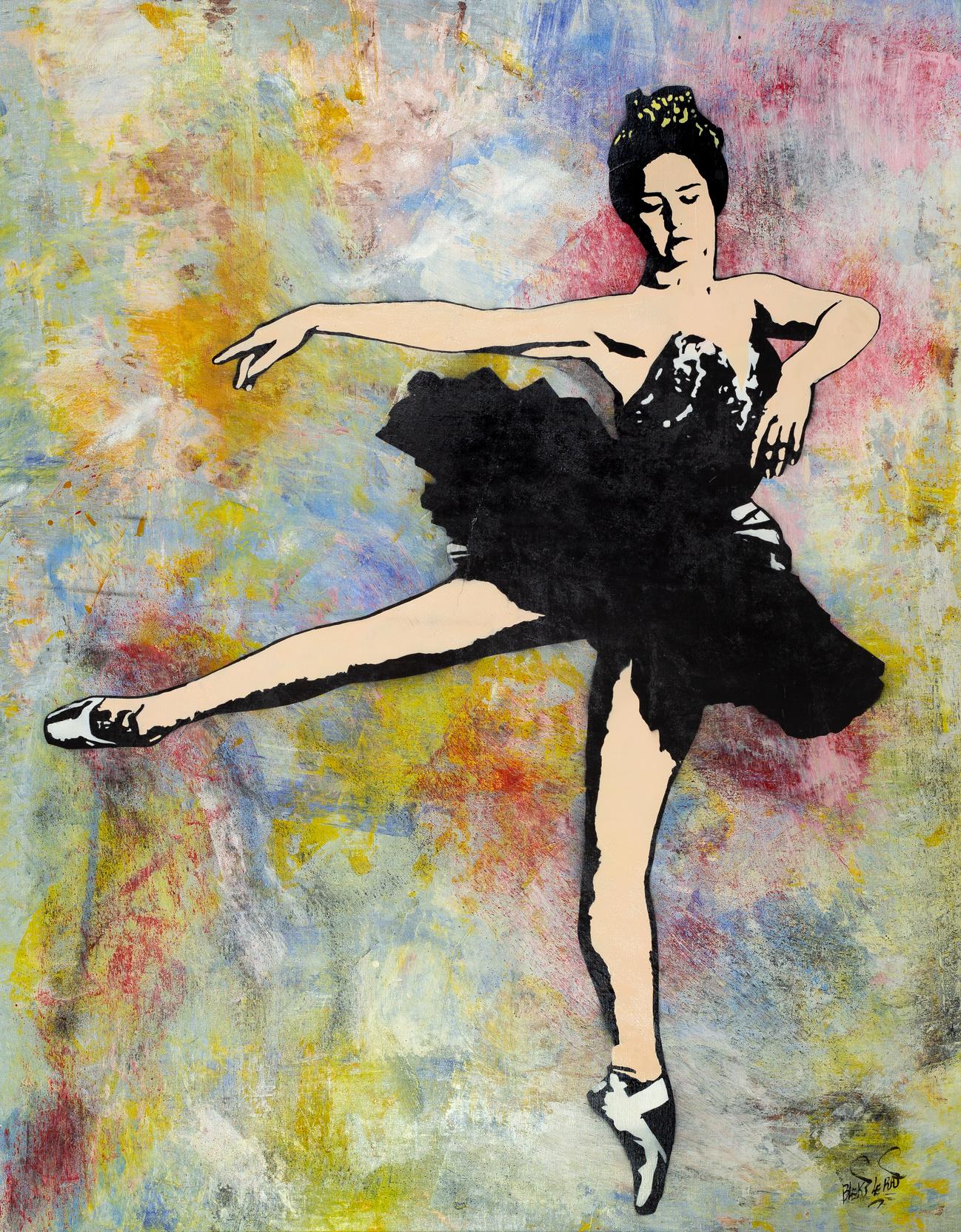
Blek Le Rat
7 Danseuse, 2021
Acrylic and aerosol on linen
39 1 x 51 1 in
27

Blek Le Rat
Danseur, 2022
Acrylic and aerosol on linen
45 5 x 35 in
29

Blek Le Rat
2 Ballerina, 2021
Acrylic and aerosol on linen
39 9 x 51 1 in
31

Blek Le Rat
Sweet Dreams Red, 2022
Acrylic and aerosol on linen
40 x 40 in
33

Blek Le Rat
Danseuse Blue Green, 2022
Acrylic and aerosol on linen
63 5 x 51 in
35
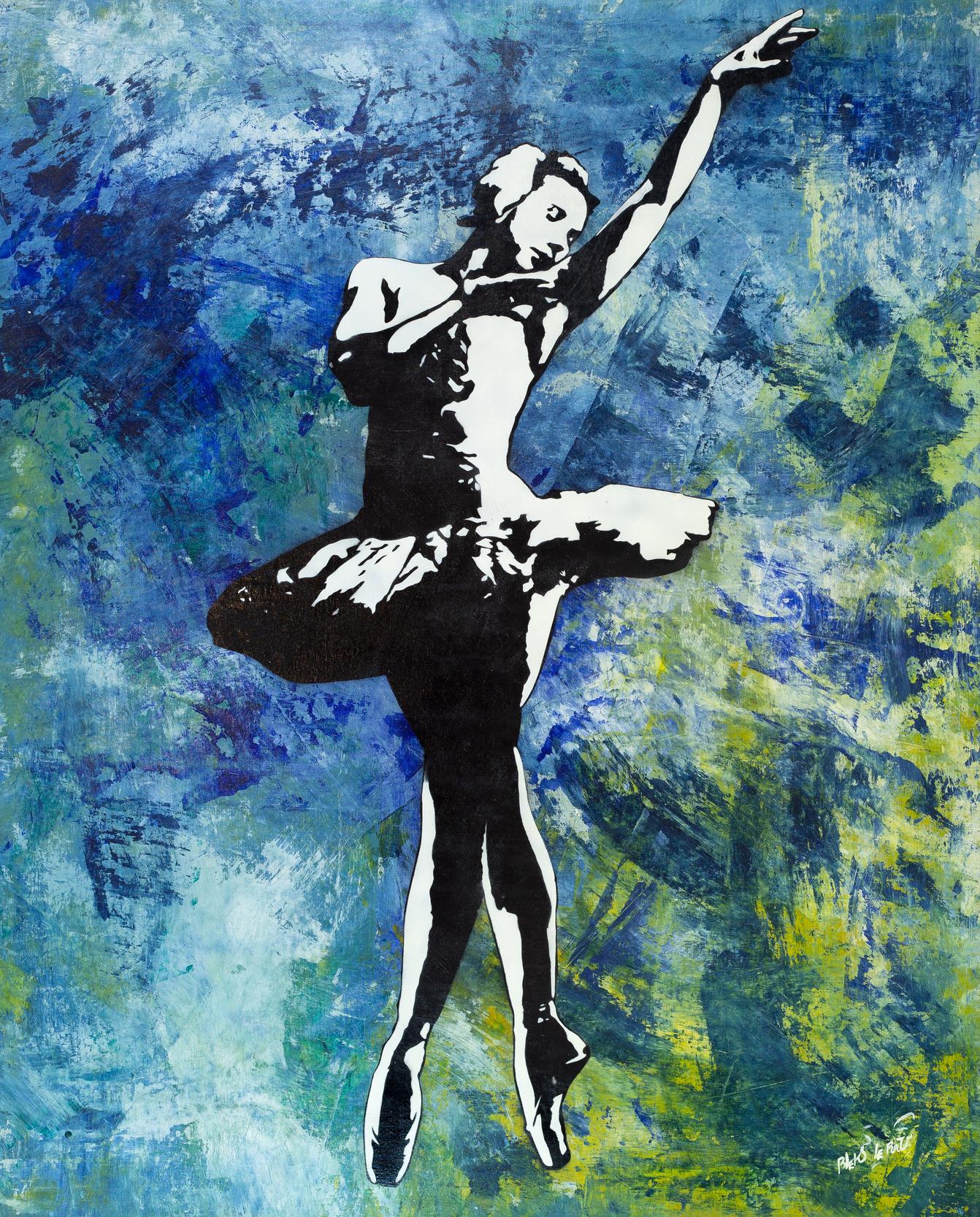
Blek Le Rat
Chopin, 2022
Acrylic and aerosol on linen
44 x 40 in
37

Blek Le Rat
Beethoven, 2022
Acrylic and aerosol on linen
44 5 x 40 in
39

Blek Le Rat
Liszt, 2022
Acrylic and aerosol on linen
44 5 x 40 in
41
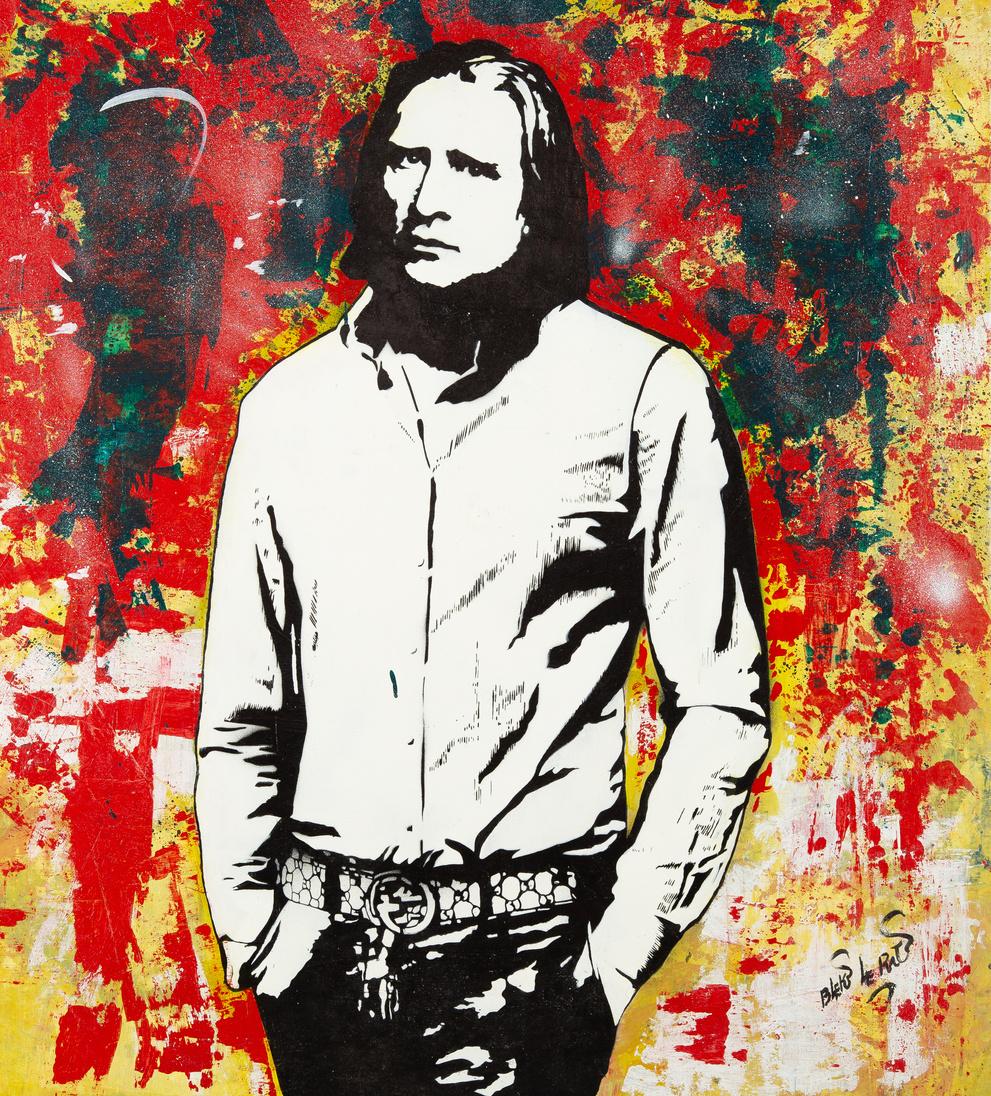
THE MAN WHO WALKS THROUGH WALLS
One of Blek Le Rat's most notable images is his selfportrait, The Man Who Walks Through Walls (TMWWTW). This character features the artist's face on the body of one of his favorite actors Buster Keaton holding suitcases filled with stencils. Blek has described this figure as a traveler who journeys around the world, perhaps an immigrant seeking a place to settle down. "He is like a ghost" Blek explains, walking through one wall only to appear on another in a new city The figure also lends itself to Blek's own mission of spreading his art widely, traveling across the world to adorn the streets of faraway places.
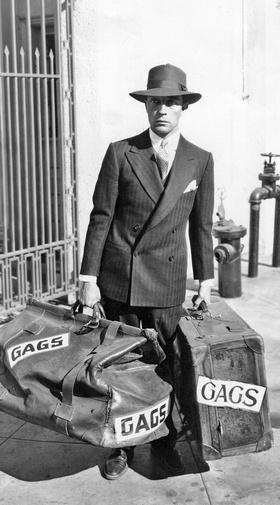
TMWWTW made its debut on the streets of London in 2004 and has since become, fittingly, Blek's most traveled character. He can be found on walls in London, Buenos Aires, Leipzig, Prague, and New York, among others. Oftentimes Blek incorporates the flag of the country in which he paints the character on the side of one of the man's suitcases.
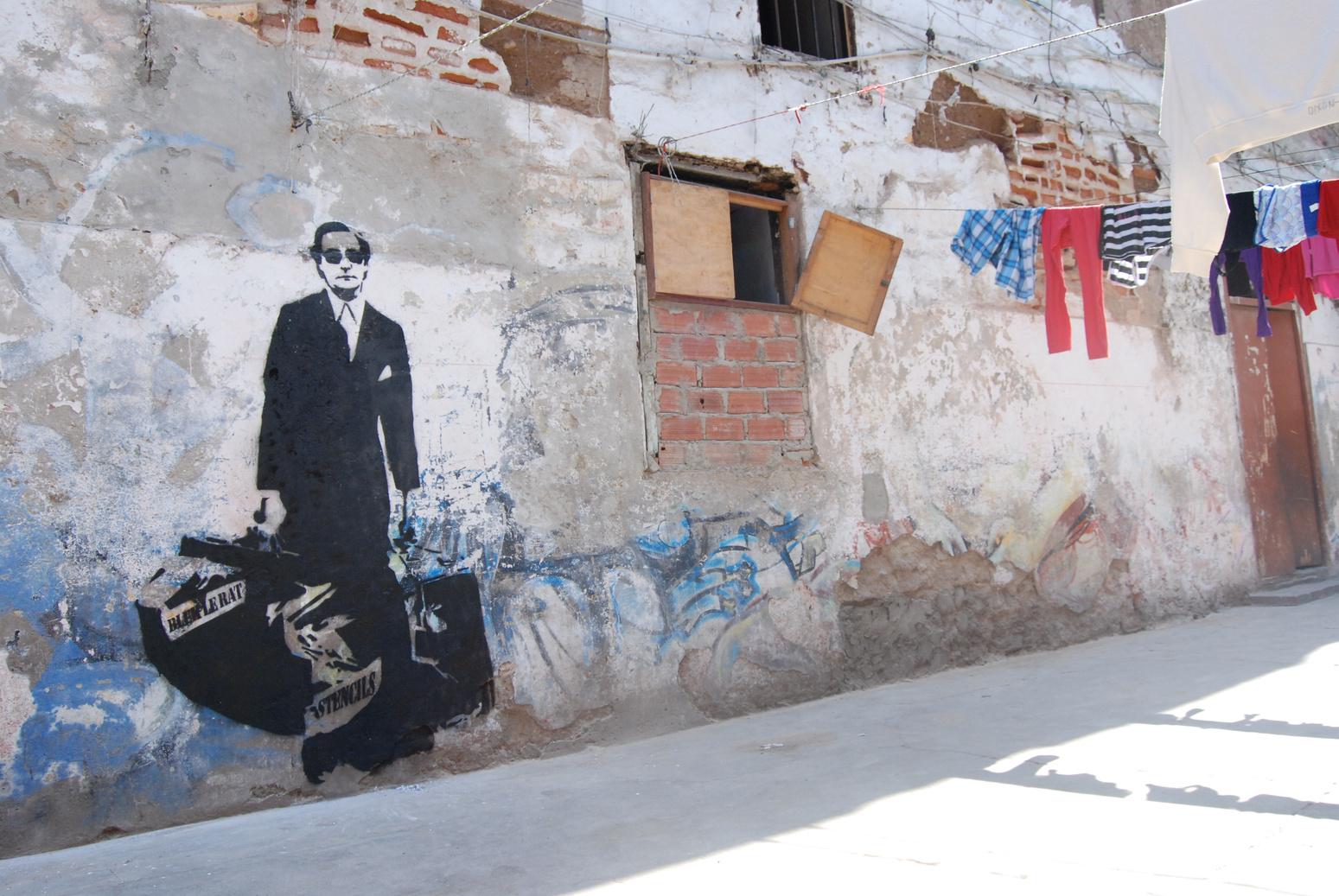
Blek Le Rat
TMWWTTW Blue, 2022
Acrylic and aerosol on linen
41 x 40 in
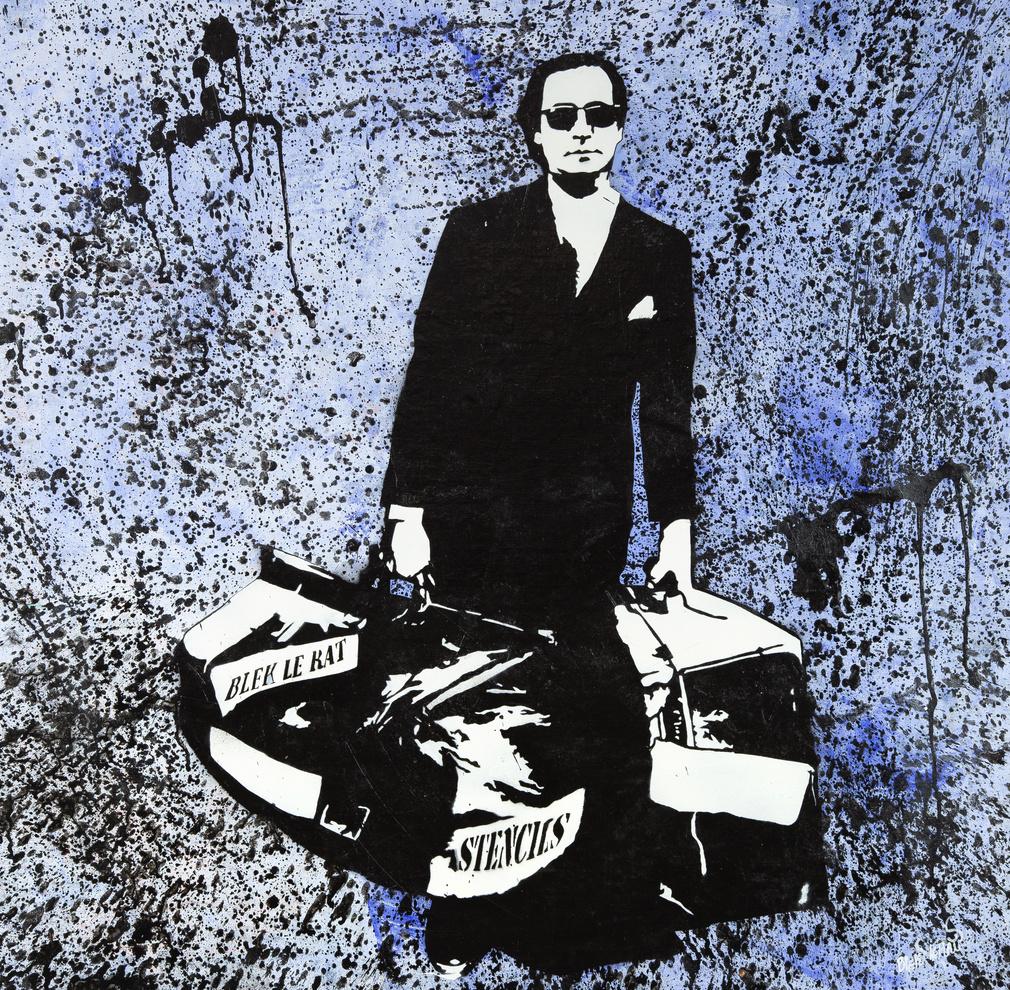
Blek Le Rat
Sibyl, 2022
Acrylic and aerosol on linen
43 5 x 40 5 in
45
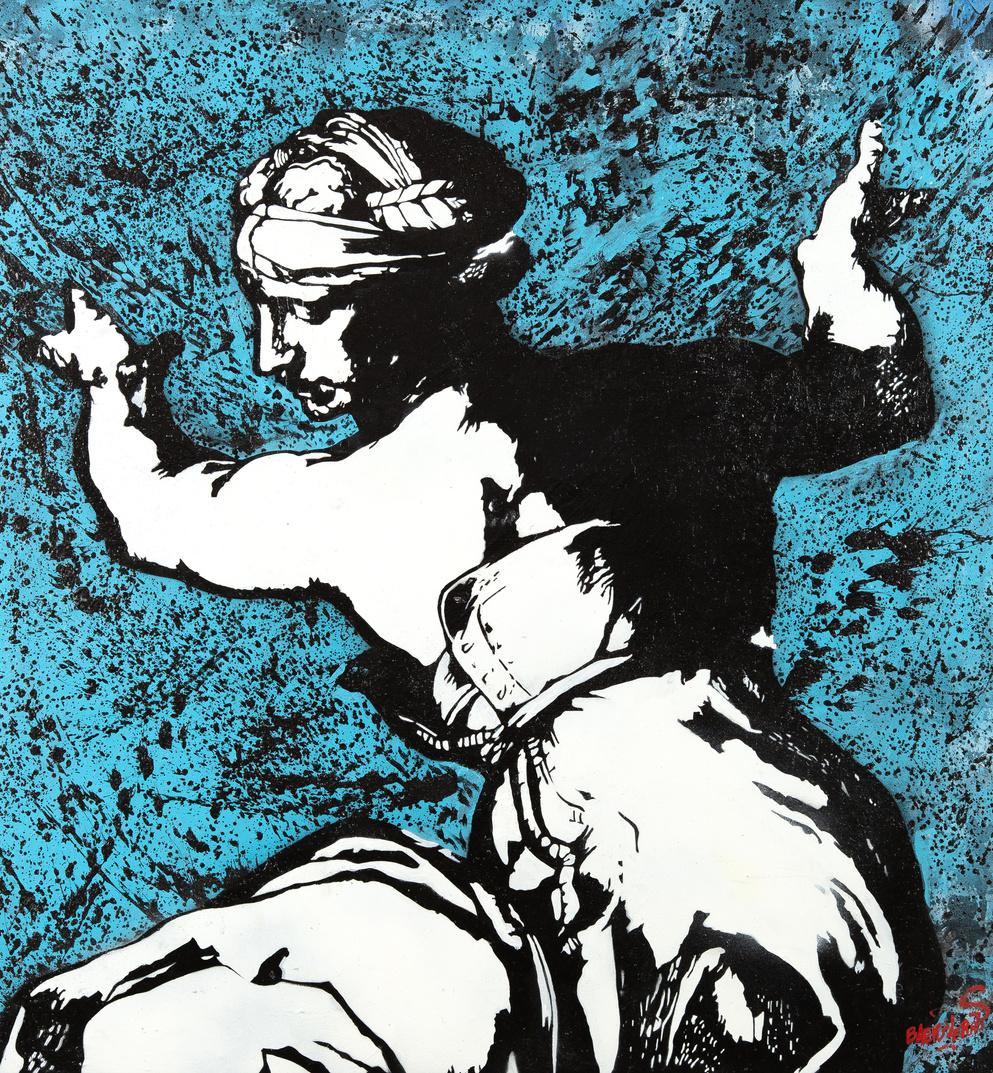
Blek Le Rat
Street Artist Rat, 2022
Acrylic and aerosol on linen
38 x 39 5 in
47
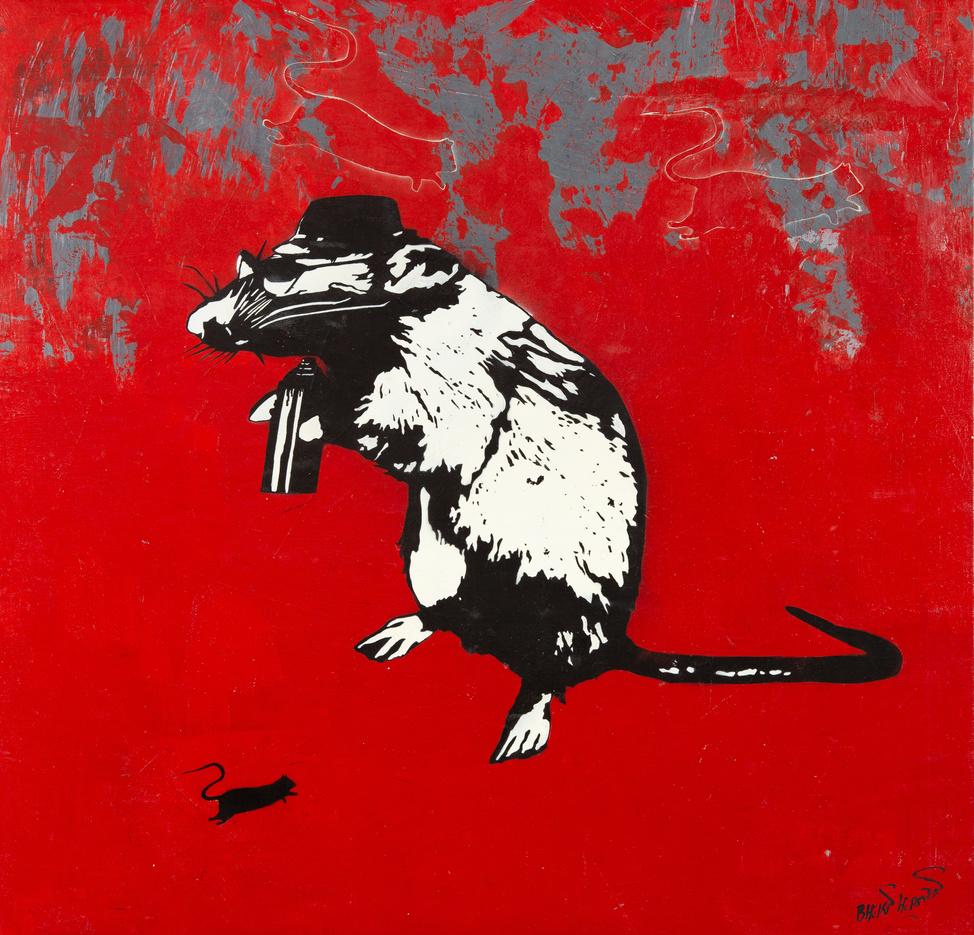
Blek Le Rat
Dog & Pony Show, 2011
Acrylic and aerosol on linen
79 6 x 95 2 in
49
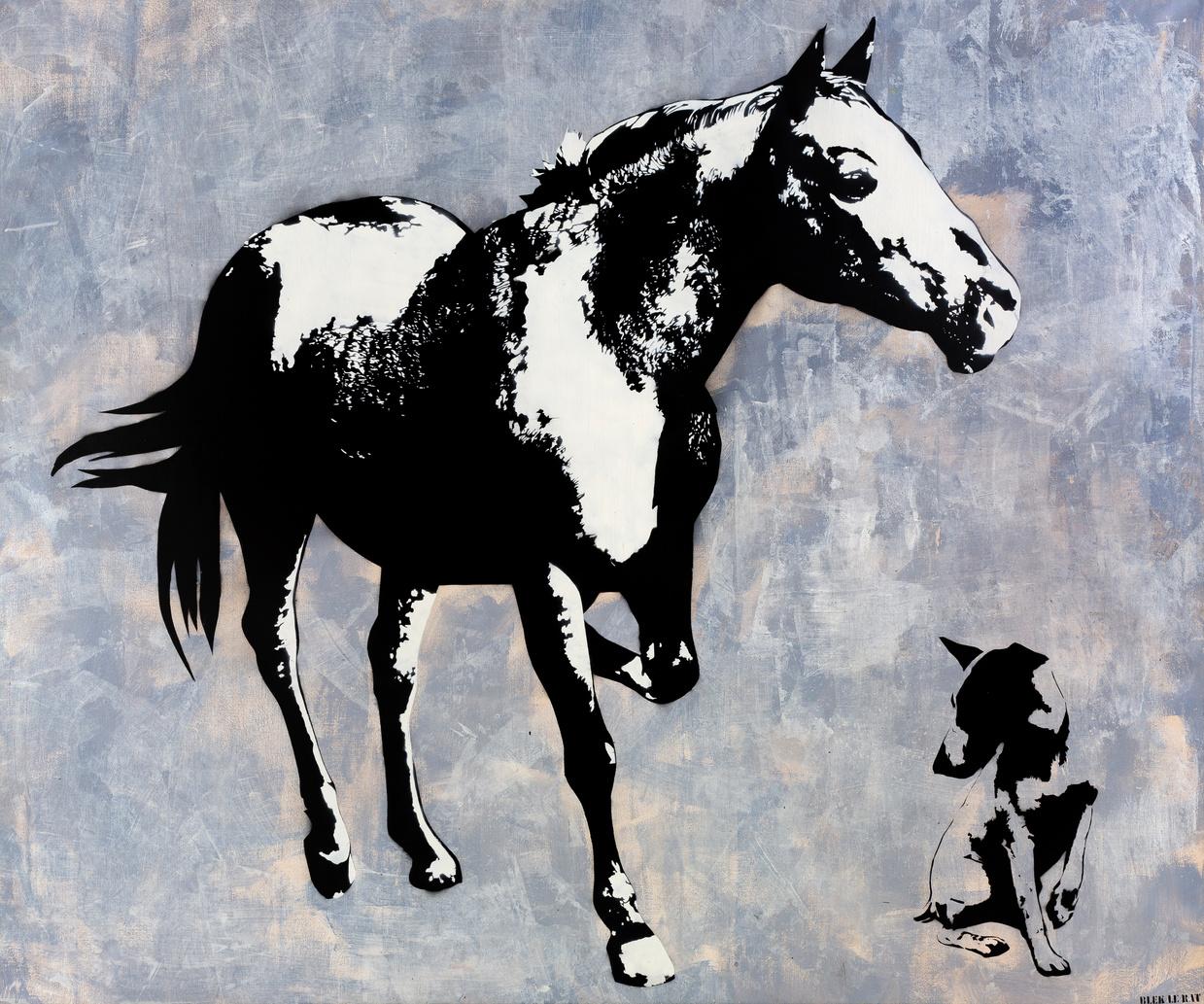
Blek Le Rat
What Has Been Seen Cannot Be Seen, 2010
Acrylic and aerosol on linen
77 25 x 94 88 in
51

Blek Le Rat
Richard Hambleton Tribute, 2022
Acrylic and aerosol on linen
83 x 52 in
53

Blek Le Rat
Angel With Rat Pink, 2022
Acrylic and aerosol on linen
64 x 52 in
55

Blek Le Rat
Chinese Girl, 2022
Acrylic and aerosol on linen
64 5 x 53 in
57
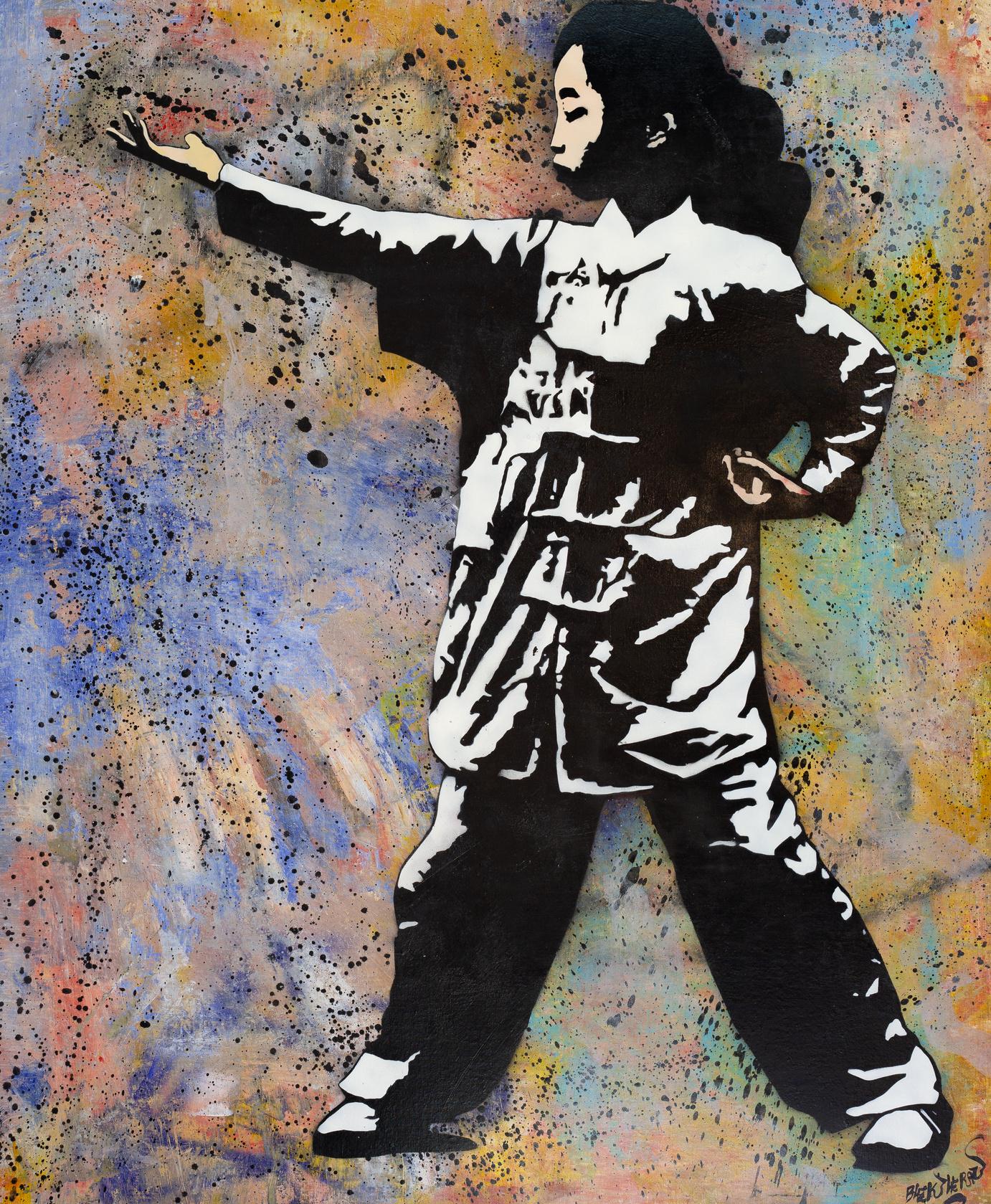
Blek Le Rat
Pantomine, 2022
Acrylic and aerosol on linen
83 x 55 in
59

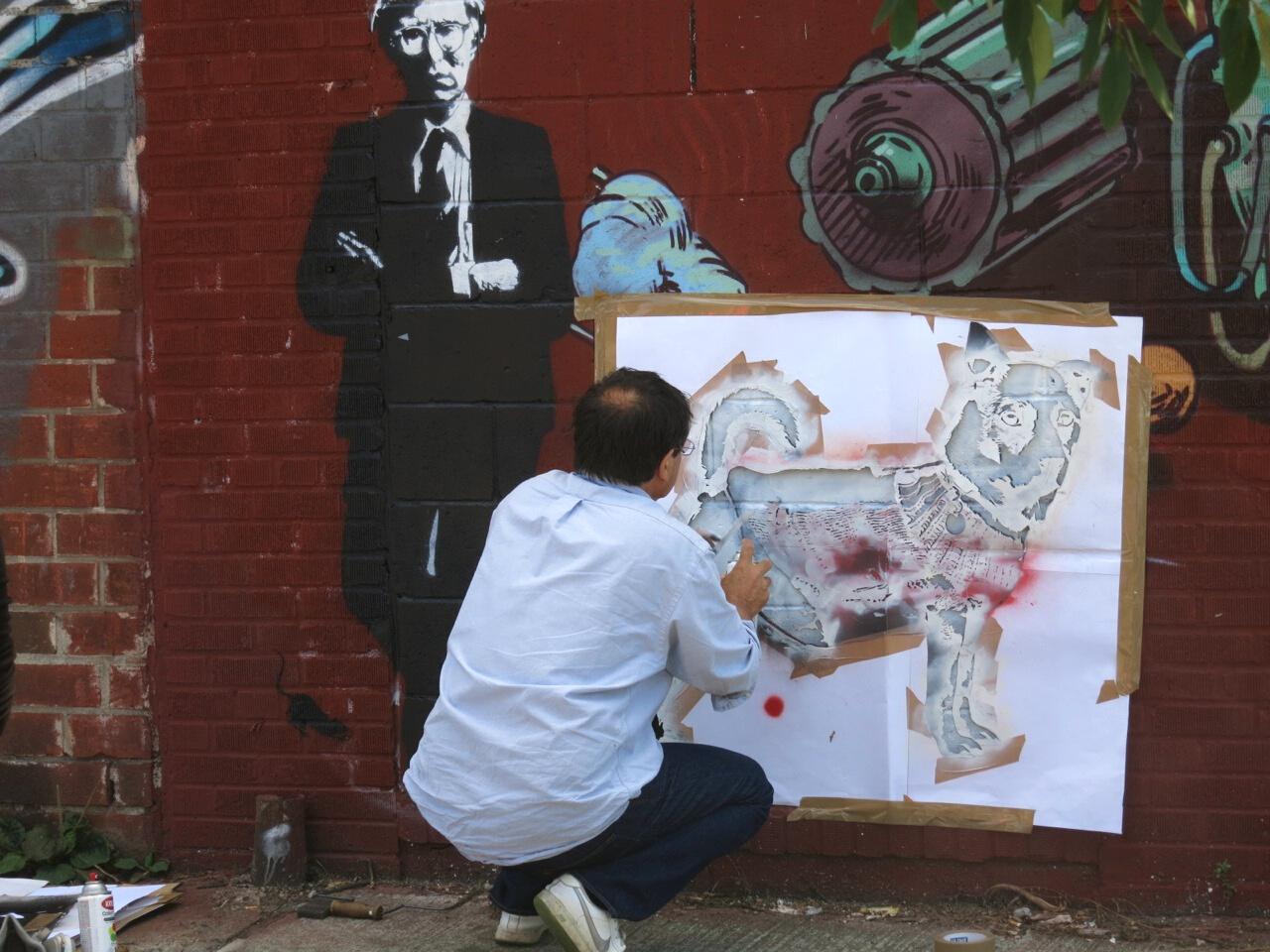
Blek Le Rat
DOG, 2022
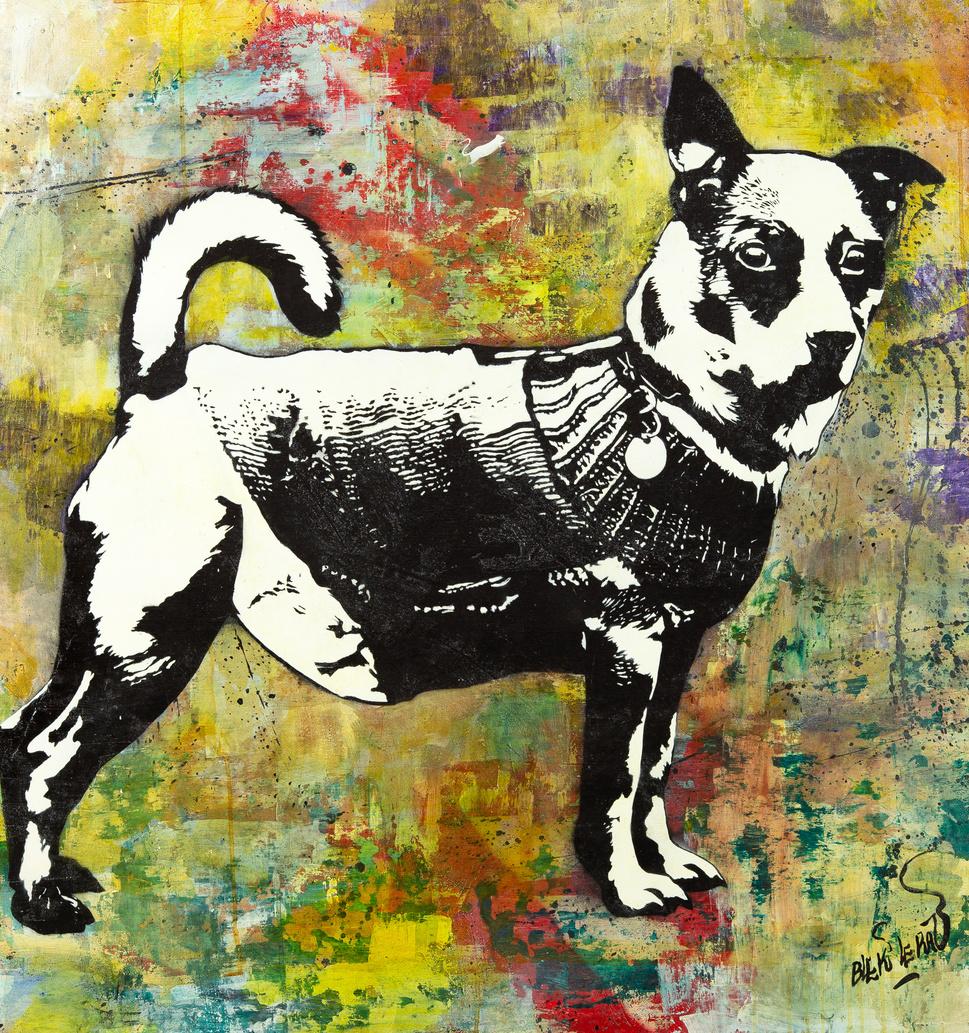
Acrylic and aerosol on linen
42 x 40 in
Blek Le Rat
Cop en Couleurs, 2022
Acrylic and aerosol on linen
42 5 x 40 in
63

Blek Le Rat
Liberty, 2022
Acrylic and aerosol on linen
39 5 x 39 5 in
65
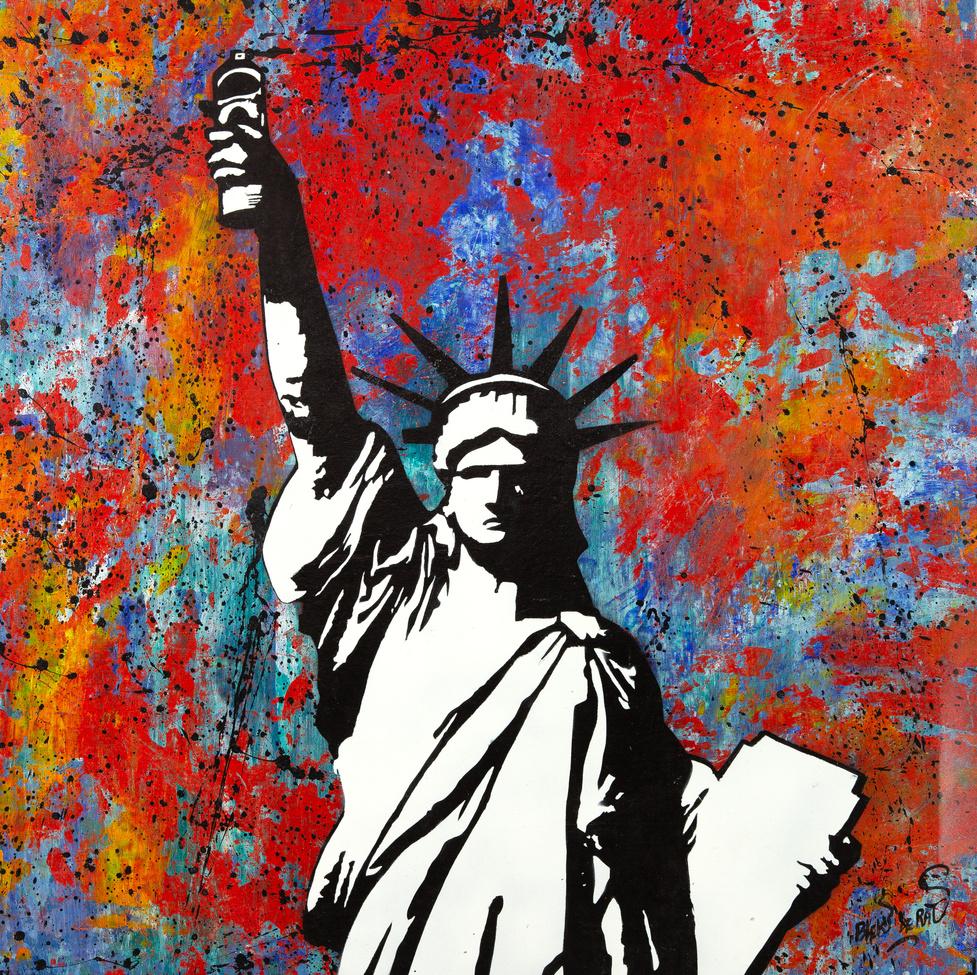
Blek Le Rat
Patron of the Arts (/30), 2022
Two Color Screenprint on 300g Arches Paper
30 x 22 in
67

Blek Le Rat
Golden Rat (on black) (/120), 2020
Two color screenprint on 300gsm Arches paper
10 x 10 in
69

Blek Le Rat
White Rat (on red) (/120), 2020
Two color screenprint on 300gsm Arches paper
10 x 10 in
71

Blek Le Rat
White Rat (on black) (/120), 2020
Two color screenprint on 300gsm Arches paper
10 x 10 in
73
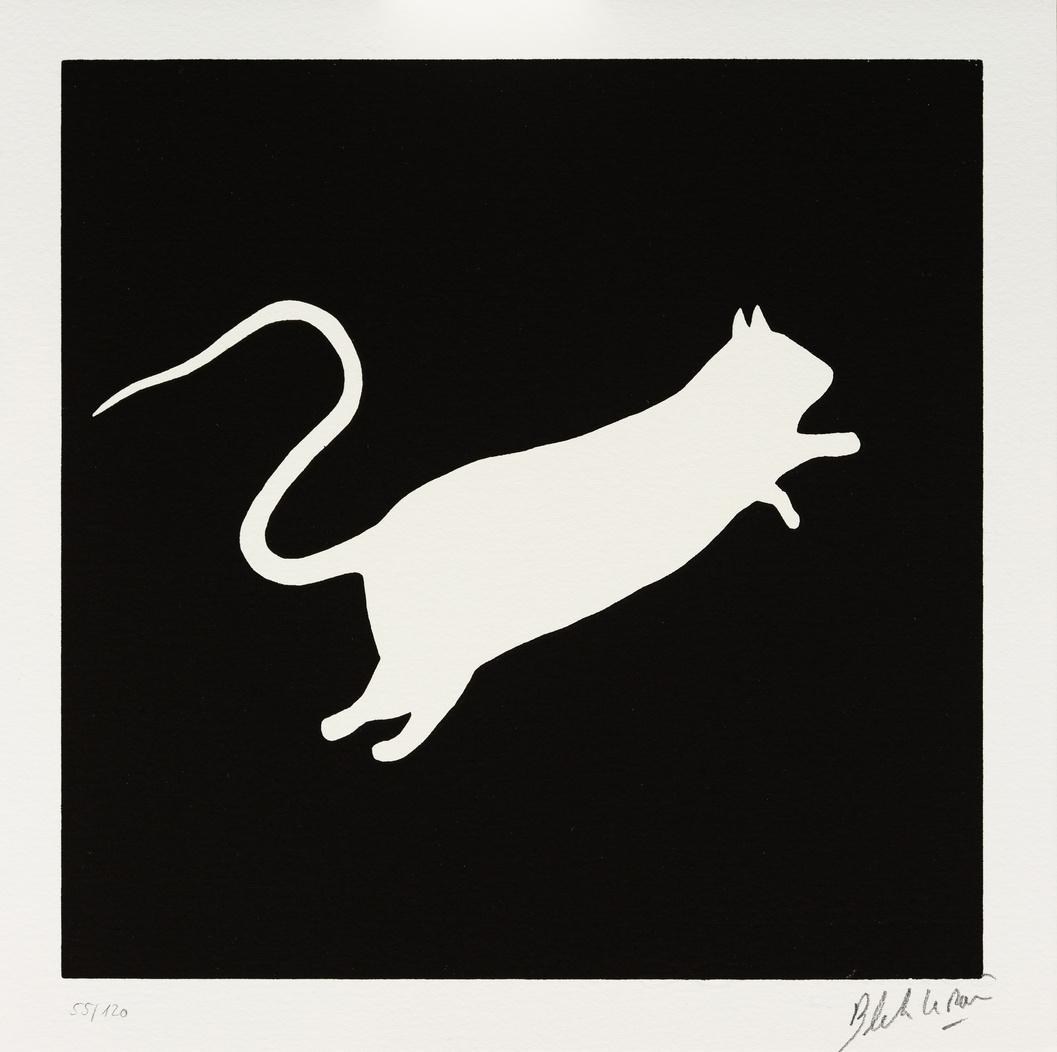

West Chelsea Contemporary is a world-class gallery offering museum-quality art in Austin, Texas, and New York City, focusing on 20th century and contemporary art predominantly in American, Asian, and European post-war movements. West Chelsea Contemporary opened in October of 2020 under the direction of Lisa Russell, who has operated this gallery since founding Russell Collection in 2002. With this gallery rebrand, her vision is for West Chelsea Contemporary to satisfy the evolving demographic and style of Austin’s culture by showcasing everything from mid-career and emerging artists to legends like KAWS, Yayoi Kusama, Keith Haring, Shepard Fairey, Andy Warhol, Blek Le Rat, Mr. Brainwash, Fiona Rae, Roy Lichtenstein, Takashi Murakami and more West Chelsea Contemporary clients are assisted by an expert staff dedicated to providing the highest level of service
NEW
YORK CITY - CHELSEA
231 10th Ave New York, NY 10011
646.590.0352

Monday - Wednesday 10am - 6pm
Thursday - Friday 10am - 8pm
Saturday 10am - 6pm; Sunday 12 - 6pm
AUSTIN - DOWNTOWN
1009 West 6th Street #120 Austin, TX 78703
512.478.4440


Monday - Wednesday 10am - 6pm
Thursday - Friday 10am - 8pm
Saturday 10am - 6pm; Sunday 12 - 6pm
WCC.ART @WCC.ART SALES@WCC.ART
WCC.ART WCCGIFTSHOP.ART

WWW.WCC.ART @WCC.ART SALES@WCC.ART AUSTIN 1009 W 6TH ST #120 AUSTIN, TX 78703 512 478 4440 NEW YORK 231 10TH AVENUE NEW YORK, NY 10011 646 590 0352


















































